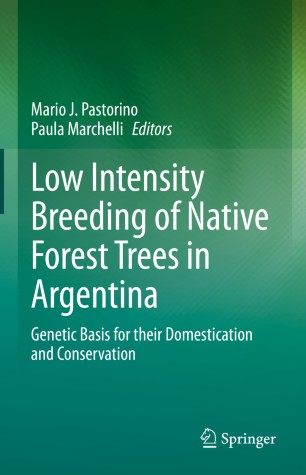Ver ítem
- xmlui.general.dspace_homeCentros Regionales y EEAsCentro Regional Patagonia NorteEEA BarilochePartes de librosxmlui.ArtifactBrowser.ItemViewer.trail
- Inicio
- Centros Regionales y EEAs
- Centro Regional Patagonia Norte
- EEA Bariloche
- Partes de libros
- Ver ítem
Temperate Subantarctic Forests: A Huge Natural Laboratory
Resumen
In the southern tip of South America, temperate subantarctic forests develop on both sides of the Andes mountain range. Known in Argentina as Andean-Patagonian forests, these ecosystems cover a narrow but long latitudinal strip, from 35° S (at Maule River, in Chile) to 55° S (in the southern extreme of the Tierra del Fuego archipelago, in Chile and Argentina). Their current geographic discontinuity from the other forests of South America is a remarkable
[ver mas...]
In the southern tip of South America, temperate subantarctic forests develop on both sides of the Andes mountain range. Known in Argentina as Andean-Patagonian forests, these ecosystems cover a narrow but long latitudinal strip, from 35° S (at Maule River, in Chile) to 55° S (in the southern extreme of the Tierra del Fuego archipelago, in Chile and Argentina). Their current geographic discontinuity from the other forests of South America is a remarkable feature, for which they have been considered a biogeographic island (Armesto et al. 1995). The sclerophyllous scrub and the high-Andean-steppe border the Subantarctic forests to the north; the Patagonian steppe, in Argentina, confines its development to the east, and the ocean marks its western and southern edges. This geographic isolation dates back to the Oligocene (about 23–33 My ago), when South America began to drift northward; before that,
the continents of the southern hemisphere were connected as Gondwanaland (Markgraf et al. 1996). Since its origin in the late Cretaceous (ca. 90 My ago; Dettmann et al. 1990) till the separation of the continents, floristic interchange endured. This explains the relationships with other southern forests like those of Tasmania and New Zealand (i.e., disjunct distribution of genus like Araucaria,
Aristotelia, Blechnum, Discaria, Lomatia, Nothofagus, Podocarpus, among others; Veblen et al. 1996). In addition, abundant neotropical elements characteristics of the “Yungas” in NE Argentina (e.g., Azara, Chusquea, Crinodendron, Drimys, Escallonia among others) reflect a history of recurrent connections with ecosystems of lower latitudes (Arroyo et al. 1995).
[Cerrar]

Fuente
Low Intensity Breeding of Native Forest Trees in Argentina : Genetic Basis for their Domestication and Conservation / Mario J. Pastorino; Paula Marchelli (Editores). Springer, Cham-Suiza, 2021 : p. 27-54
Fecha
2021
Editorial
Springer
ISBN
978-3-030-56461-2
978-3-030-56462-9
978-3-030-56462-9
Formato
pdf
Tipo de documento
parte de libro
Palabras Claves
Derechos de acceso
Restringido
 Excepto donde se diga explicitamente, este item se publica bajo la siguiente descripción: Creative Commons Attribution-NonCommercial-ShareAlike 2.5 Unported (CC BY-NC-SA 2.5)
Excepto donde se diga explicitamente, este item se publica bajo la siguiente descripción: Creative Commons Attribution-NonCommercial-ShareAlike 2.5 Unported (CC BY-NC-SA 2.5)

